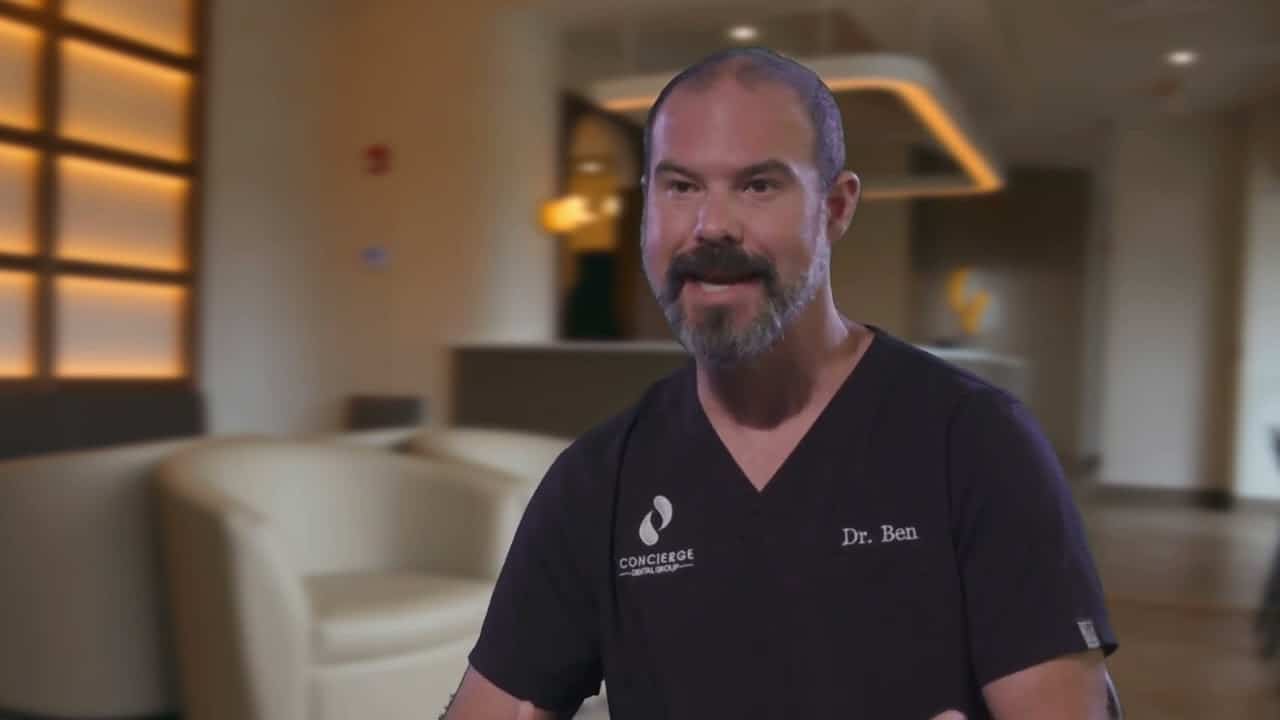Difference Between Mini and Standard Dental Implants.
There is really no difference between mini and standard dental implants other than size. There are a couple of really neat qualities to many dental implants that I think some dentists tend to neglect when they decide whether or not they’re going to use (or not use) mini implants in their practice.
Mini Dental Implants
The category of mini implants is small-diameter implants. We understand that the smaller the diameter of the implant, the better ability it has to fit into thinner bone. When a tooth is removed, and the bone resorbs, it usually resorbs from a width perspective first. So, the width will collapse. When you remove the tooth, and the width collapses, it slowly starts to shrink in height over time. The width collapse is the reason why many implants are so powerful, especially in the lower jaw, right in the front. This is where we do a lot of denture stabilization with mini implants. That being said, we can do this in a minimally invasive way now that we have mini implants, meaning we don’t have to use bone grafting, we don’t have to cut the gums, we don’t have to use stitches, and we don’t have to wait a lot of time. All of those are benefits of using mini implants in absorbed or thin ridges. That’s the reason why we have chosen, as a company, and myself personally, to support the use of mini dental implants.
Standard Dental Implants
Standard dental implants have larger bone requirements. Oftentimes, when you take out a tooth, if you just let it heal on its own, you do not have the amount of bone that’s needed to place a standard implant after healing. So, your dentist might say something like, Okay, we’ll take out the tooth today, and then you can go and see somebody else to have the implant placed”. What happens then is, after three months of healing and you follow the instructions and go to the specialist practice, they’ll take a look at the bone and say, “Oh, you don’t have enough bone. It collapsed. We have to do bone grafting first”. Or, “We have to do this procedure first”. Now, rewind just a little bit and think about what could have happened if the dentist that removed the tooth also did bone preservation or socket preservation procedures. They could have had a single-stage surgery at a much less expensive cost to add a little bone to that hole and then put a couple of stitches in at the same time as the extraction, helping the healing process and preserving the bone structure. That being said, you could also have had an opportunity to take out the tooth and put the implant in right away, and have the entire surgical procedure in a single visit.
It’s important to talk about the benefits to the patient. That’s why I usually say to patients, “Okay, so in the future, when somebody wants to take something out, make sure that they also have a plan to put something in”. Because if they don’t have the plan, they don’t know what the plan is. They’re creating the canvas or the foundation or the implant in the future, maybe without considering it. So, they don’t even know that they’re creating that. Or maybe they know, but they don’t want to deal with it or don’t have the skills to deal with it. Or I’m thinking maybe they’re going to do something like a bridge, a fixed bridge, or even a denture. All are reasonable options, so long as I think they’ve presented initially that initial presentation of what are we going to do once we pull this out? Also, from a patient’s perspective, maybe they’re in a lot of pain and they just say, “Just rip it out, doc! I just want to get it out, because I don’t feel good”. We can totally understand that. To some of our patients, I say, “Okay, let’s get down off the ceiling. Let me numb you up first. We’ll deliver some local anesthetic to the area. You’ll feel better, and then we can have a calm discussion surrounding what we should do”. It’s in your best interest as a patient to understand what’s happening before we do it. You’re really setting the groundwork for the future.

